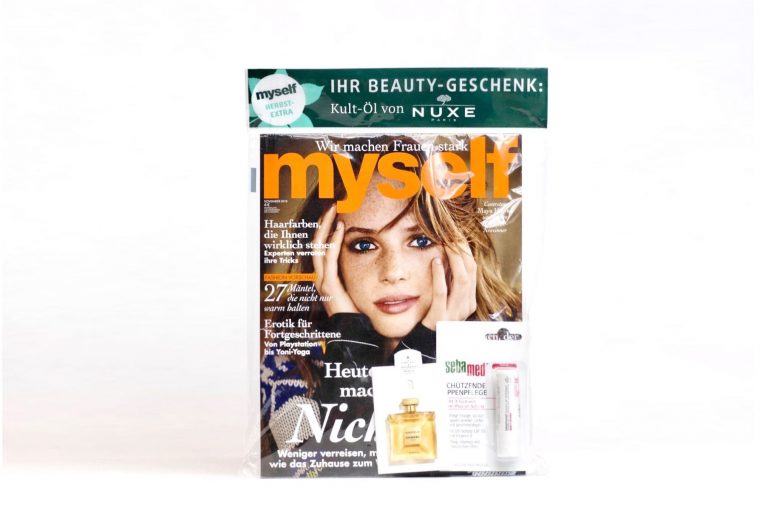
Eco-friendly foil packaging solutions for publishing houses
There has been increasing concern in recent years for the negative impact of plastic packaging on the Mother Earth. This article explains the issues associated
OPP (BOPP) is a polypropylene foil obtained through stretching a previously extruded plastic mass that form a tape – first in the tape travel direction, and then in the transverse direction. Double-sided stretching or the so-called “foil orienting”, significantly improves its rigidity and tensile strength. This process has a positive effect on its transparency and barrier properties.
It is characterized by gloss, transparency, and low permeability of water vapour and fragrances. OPP foil can accept any overprint. The foil can constitute a direct packaging material or be a component of foil laminates.
It is one of the most popular foils in the packaging industry, ideally suited for printing and lamination. BOPP foil packaging is characterized by high quality and appearance.
BOPP foil is one-sidedly activated from the outside. This enables it to be fused below the polypropylene melting point. BOPP foil fusing temperature depends on the properties of fusing electrodes and fusing rate. It is suitable for use in packing machines..
BOPP foil properties:
BOPP foil application:
CAST (CPP) foil CAST (CPP) is a non-oriented polypropylene foil obtained through extrusion. This process involves “pouring out” the still-liquid foil through a narrow gap onto a rotating roller and its sudden cooling without any stretching. Rapid cooling enables achieving high foil quality, flexibility and clarity. This leads to the creation of a foil with mechanical properties similar to PE and optical properties similar to OPP.
CPP foil is characterized by high gloss, transparency and improved barrier capacity against the water vapour penetration. Its low specific weight impacts the packaging efficiency relative to other foils with the same thickness. Owing to the high tear/puncture resistance, it is easily perforated. It can be used as a component of laminates, combined with other materials.
This foil is often used when a newspaper bonus comes with edges, irregular shape etc.
LDPE is a polypropylene foil. It is perfect for any type of goods. Often used when packing industrial, chemical, as well as food products. It is very durable and can be used both for manual and automatic packing. It can be overprinted.
Less commonly used for manufacturing foil bags for publishing houses – it is less transparent, yet very durable. Perfect for large mailing campaigns, etc.
PCR (short for Post-Consumer Recycled) and IR (Industrial Recycled) are types of recycled LDPE foils. Used foil waste is recycled into secondary raw material (regranulate) that is then used to manufacture new packaging.
They contain impurities (IR has less, since it is derived from “clean” waste from LDPE foil manufacturing).
Their prices are unstable because they are strictly linked with recycled raw material availability, however, they are always lower than that of OPP or LDPE foils. Recycled foils can be overprinted; however, they are not suitable for contact with food. What is important, is that they can be further recycled and should be disposed of using a yellow waste container.
The regranulate can be colourless, straw-coloured or blue. Purity is an important parameter for foil manufacturers – the more consistent it is in terms of colour, structure and composition, the easier it is to precisely achieve desired properties of the produced foil.
Foils can be made from 100% regranulate or their composition can be supplemented with conventional PE granulate.
Using PCR and IR foil to produce new packaging prevents the accumulation of plastic waste that, due to the long biodegradation period, can deposit and pollute the environment. Using recycled foils can actively support the Clients in making an informed choice regarding the purchase of eco-friendly products, hence, creating a better and cleaner living space. At the same time, it can reinforce the brand image.
PET foil is obtained from polyester materials in the course of co-extrusion.
They are characterized by rigidity, gloss and high barrier capacity. Owing to their properties, PET foils have many applications in numerous industries. They can be used to pack food, food products, cosmetics, industrial materials and other.
PET foil can be printed with all methods. Since it does not exhibit weldable properties, it is often found in foil laminates, accompanied by other plastics, providing them with stiffness and thickness.
PLA foil or polylactide (polylactic acid) is made of renewable plant materials, e.g., corn or cane sugar. It is transparent, stiff and brittle. It is not flexible and is easily damaged. Its price is several times higher than that of other foils. PLA foil can be overprinted and come in contact with food products. It is fully biodegradable and can be recycled.
Biodegradable (PLA) foils decompose solely under industrial composting conditions, which require appropriate amount of light, humidity, oxygen supply and temperature.
Foil laminates is a type of thick foil obtained by combining two or more layers of foils made of various materials. We encounter them every day, because it is mainly laminate packaging that is used to pack food products. Foil laminates are multi-layer foils in other words.
Laminates are popular owing to their aesthetics, durability and high barrier capacity. Their resistance to mechanical damage (e.g., during transport) is higher than that of ordinary foils or paper. They can be used to store products in low temperatures.
Two- or three-layer laminates (duplex and triplex foils) are used, depending on the product type a packaging is supposed to protect (loose, freeze-dried, frozen, chocolate, etc.) and the storage properties intended for it (product expiry date, light barrier, air, humidity).
The most frequent ones two-layer / DUPLEX laminates:
.
The most frequent ones three-layer / TRIPLEX laminates:
.
Depending on the needs, we also manufacture laminates in the PEEL, ANTIFOG technology and with an EVOH barrier.

The name of this printing technique comes from the Greek word “flexo”, which means flexible. A characteristic feature of the flexo technique is using convex, flexible printing moulds (polymer plates) that press the pattern – design with liquid inks. Owing to this flexible mould, “flexo” can be applied for various substrates, not necessarily with even surfaces.
The execution of accurate, polymer moulds is cost-intensive, all the more that every colour of a design requires a separate polymer. Owing to the cost of the dies, flexographic printing is profitable in the event of large production volumes. The die costs undergo amortization in such a case. Once made, polymer flex dies can be used for many years.

Offset printing is a flat printing technique and is one of the most popular industrial printing technologies. It is most versatile and offset prints are highly accurate and precise. Offset technique can be used to print business cards, books, as well as foils.
Dies used in offset printing are made of lightweight aluminium, and their production is relatively inexpensive. However, they are not very durable and cannot be used for reprints of the same pattern.
Preparing offset printing requires financial outlays and is time-consuming. This generates costs, which are compensated only by really high volumes. This method is unprofitable in the case of low volumes.
Offset prints are characterized by accurate reproduction of colours and details. They are durable, high-quality and can be refined.

Rotogravure printing is an advanced method, used most frequently when producing packaging and magazines. A metal (usually steel or copper) cylinder with an engraved image is the printing mould.
This method provides good printing quality, however, due to the high cylinder cost, it is very expensive and still not popular.


There has been increasing concern in recent years for the negative impact of plastic packaging on the Mother Earth. This article explains the issues associated

Because we want to be up to date with the latest trends and be familiar with the novelties from the packaging sector, we regularly participate in

Welcome to our blog! We invite you to follow our blog, where we will post company news, information from the packaging industry and facts about
We carry out Client’s orders.
In our offer: foil packaging, foil laminates, foil bags, doypacks, pouches, packaging foil, bags for newspapers, packaging for publishing houses, foils, bags for masks, food foils, food packaging, packaging tape, tape in roll, bags with logo.

Providing any personal data is always voluntary. You have the right to update or fully remove your personal data at any time.
See our privacy policy
Cookies are IT data, in particular text files stored on the final device of the user of akat-group.com.
If you disable cookies, we cannot save your preferences. This means that every time you visit this website you will have to re-enable cookies.